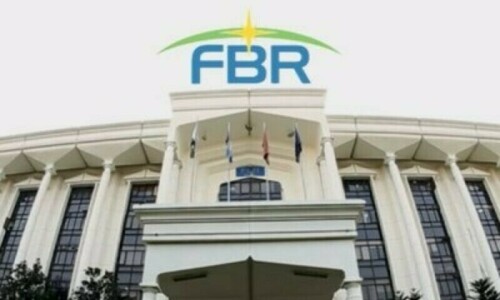
KARACHI: Total debt and liabilities of the country rose by Rs2.597 trillion in the period running from July 2019 to March 2020, the Pakistan Economic Survey showed. The total is now at 102.6 per cent of gross domestic product (GDP).
The bulk of the increase seems to have come from government domestic debt, which rose by Rs1.746tr in the same period. The remaining increase has come from government’s external debt which rose by Rs603 billion.
Total public debt has risen to 84.4pc of GDP by March of 2020, as per data in the survey. Finance Adviser Dr Abdul Hafeez Shaikh announced this same ratio at 88pc in his press conference, which presumably includes the borrowing that has happened since March, such as the $1.4bn borrowed from the IMF in April. This figure was 74.2pc in the corresponding period last year.
The survey says the government borrowed Rs2.08tr for budgetary support in the period July to March, whereas an additional Rs500bn seems to have been added to public debt on account of depreciation of the Pakistani rupee against the US dollar.
Tenors in domestic debt shifted sharply towards longer periods. By March, only 28pc of total domestic debt was held in 3 month Treasury bills whereas in July this was hundred percent. “[M]ost of the net domestic debt raised during first nine months of current fiscal year was through medium-to-long-term government securities (PIBs) and NSS,” the survey says. The shift occurred at a time when markets felt the interest rates had peaked.
The government is also in the process of rolling out a debt instrument targeted at overseas Pakistanis that will be called the Overseas Pakistanis Savings Bill. The instrument will offer dollar-based returns of 5.5pc, 6.0pc and 6.5pc on three, six and 12 month paper, respectively.
Pakistan’s gross public debt as a proportion of revenue collection has risen sharply in recent years. The government had been expecting the debt to GDP ratio to drop at the end of the current fiscal year, but the survey says the Covid-19 shock has dashed that hope, “mainly due to the sharp decline in growth and the increase in the budget deficit.”
Interest payments came in at Rs1.88tr in the first nine months of the fiscal year, against a full year budgeted figure of Rs2.891tr. The sharp fall of 5.5 percentage points in interest rates is likely to result in lower interest payments by the end of the year.
In the July to March period, total servicing of public debt ate up 57.5pc of revenue. In the years 2013 to 2018 this percentage hovered around 40pc.
Published in Dawn, June 12th, 2020
















































